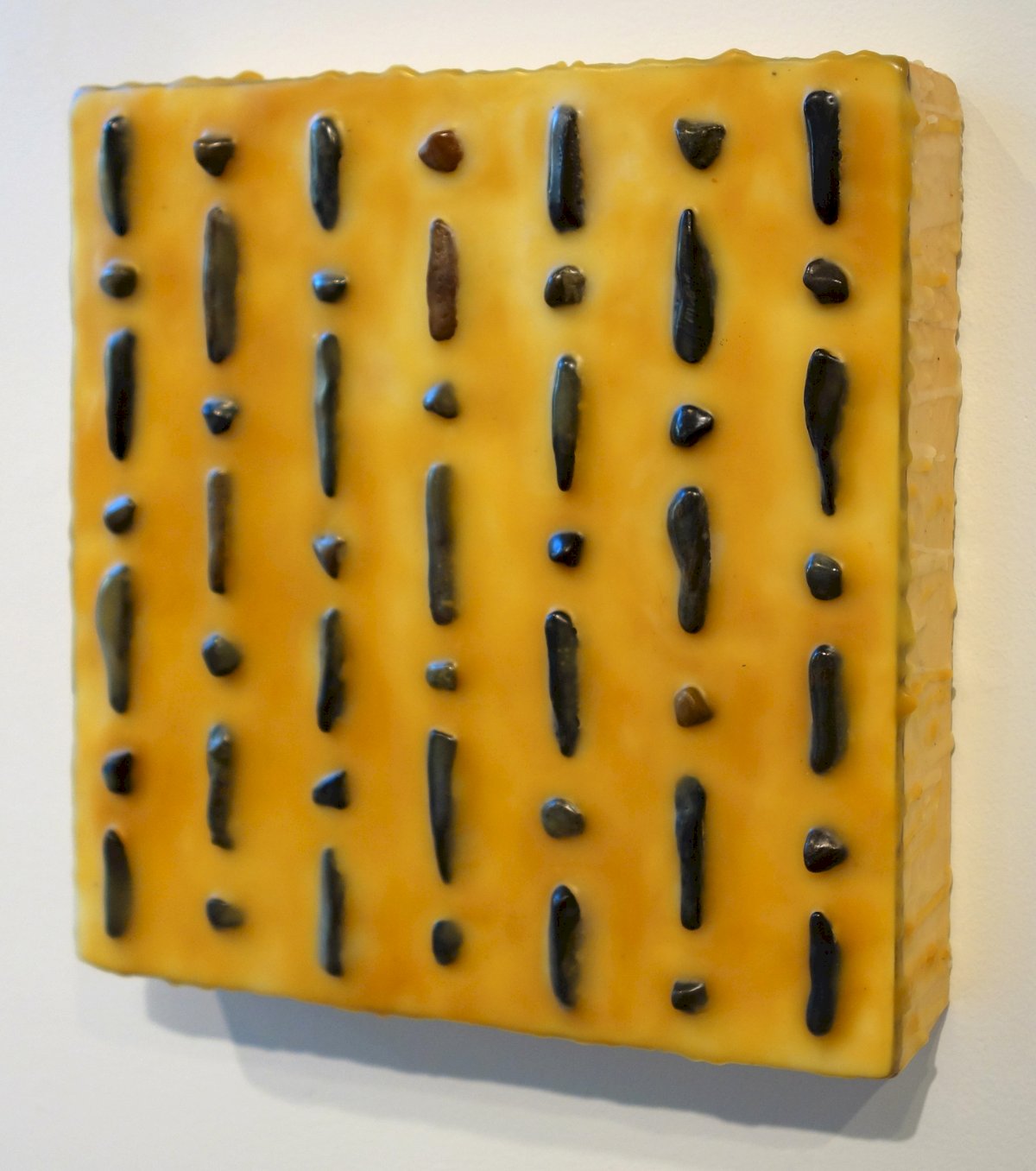JT Gibson Encaustic Series
June 30, 2020
J.T. Gibson uses encaustic wax and beach stones on wood panels to create colorful, patterned, sculptural wall relief. Wax is used in the process of bronze making as a mold in what is called lost-wax casting. Gibson has used molds made of similar casts in his bronze Tidal Suite series. In this instance, the wax casts are the final product, their lustrous quality and ephemeral properties make them a powerful form.

An Encaustic Primer
Encaustic is an ancient technique of layering hot pigmented wax on a surface or substrate, such as a wood panel. Heated wax can be applied, manipulated, and cooled before the next layer is fused on. Pigment can be added for coloration, and objects can be added for a sculptural effect. The layering and coloration of the encaustic wax give the artwork its unique optical and luminous quality.
Encaustic artists use different tools, such as stencils, stamps, and stones, to create patterns in their paintings. Brushes are used to apply ink, charcoal, graphite, or oil paint to and within different layers of wax. A technique unique to encaustic is called “intaglio” which involves using a needle tool to etch into the wax to make visible patterns or lines. Oil paint or oil stick is sometimes rubbed into these incised areas to create a linear perspective or effect within the painting.
The technique of encaustic painting dates back to the ancient Greeks, who used wax to seal the hulls of their ships. Pigmenting the wax popularized the decoration of warships and the use of encaustic painting as an art form. The durability of wax and the preservation of the colors within the wax allows these works to persist through time. Some of the best known encaustic paintings are the Fayum funeral portraits, which were painted in the 1st through 3rd centuries by Greek painters in Egypt, and placed over the person’s mummy as a memorial. These are the only surviving ancient encaustic works but the persisting quality of the colors due to the protective wax is notable. The art technique was revived and rose to prominence again in the 20th century.
sources:
https://www.moeart.org/encaustic-painting
https://www.eainm.com/what-is-encaustic/
Related posts:
Ask an Artist: J.T. GibsonMinimalism
Shareable link to this blog entry:
http://www.thepagegallery.com/blog/encaustic-primer